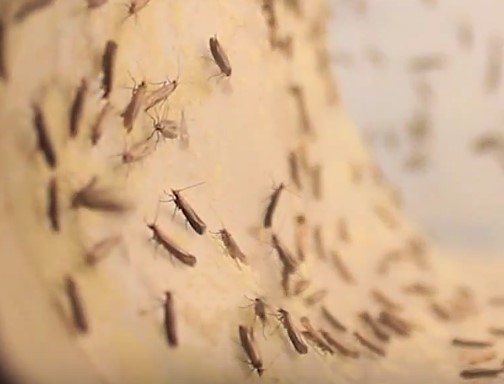New to Delta, the diamondback moth has been making its way through homes over the last year.This small moth is coloured grey and brown with a cream-coloured band and shapes of a diamonds on its back. The diamondback moth is considered a pest in areas that do not experience very cold winters. The diamondback moth or cabbage moth has a short life cycle of 14 days at 25°C and are considered pests as they feed on broccoli, cauliflower, brussels sprouts, kale, cabbage, wintercress and bok choy. Pesticides were used to kill the moths but diamondbacks have developed resistance to many of the common chemicals. This moth uses its antennae to taste its host plant, called antennation. After the moth has determined if the plant is acceptable the moth then sweeps its ovipositor across the site of deposition in order to gather more information about the host. The female moths then lay their eggs in crevices and grooves of the leaves. Larvae damage leaves, buds, flowers, and seed buds of the plants. Although the larvae are small, they can be very numerous and cause complete removal of foliar tissue except for the leaf veins.


